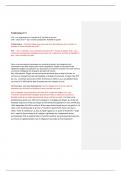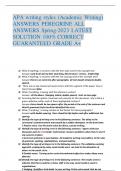Other
A/A* Student's Essay Plans to Russia 20 mark questions (A-Level History, Unit 2C.2, Russia in revolution , Pearson Edexcel)
- Institution
- PEARSON (PEARSON)
This document provides a set of essay plans for responses to past paper questions (complete with criteria, numerous factors, a line of argument, and detailed evidence) for the Unit 2C.2 'Russia in revolution '. These essay plans can serve as a guide for anyone looking to understand how to write a L...
[Show more]












